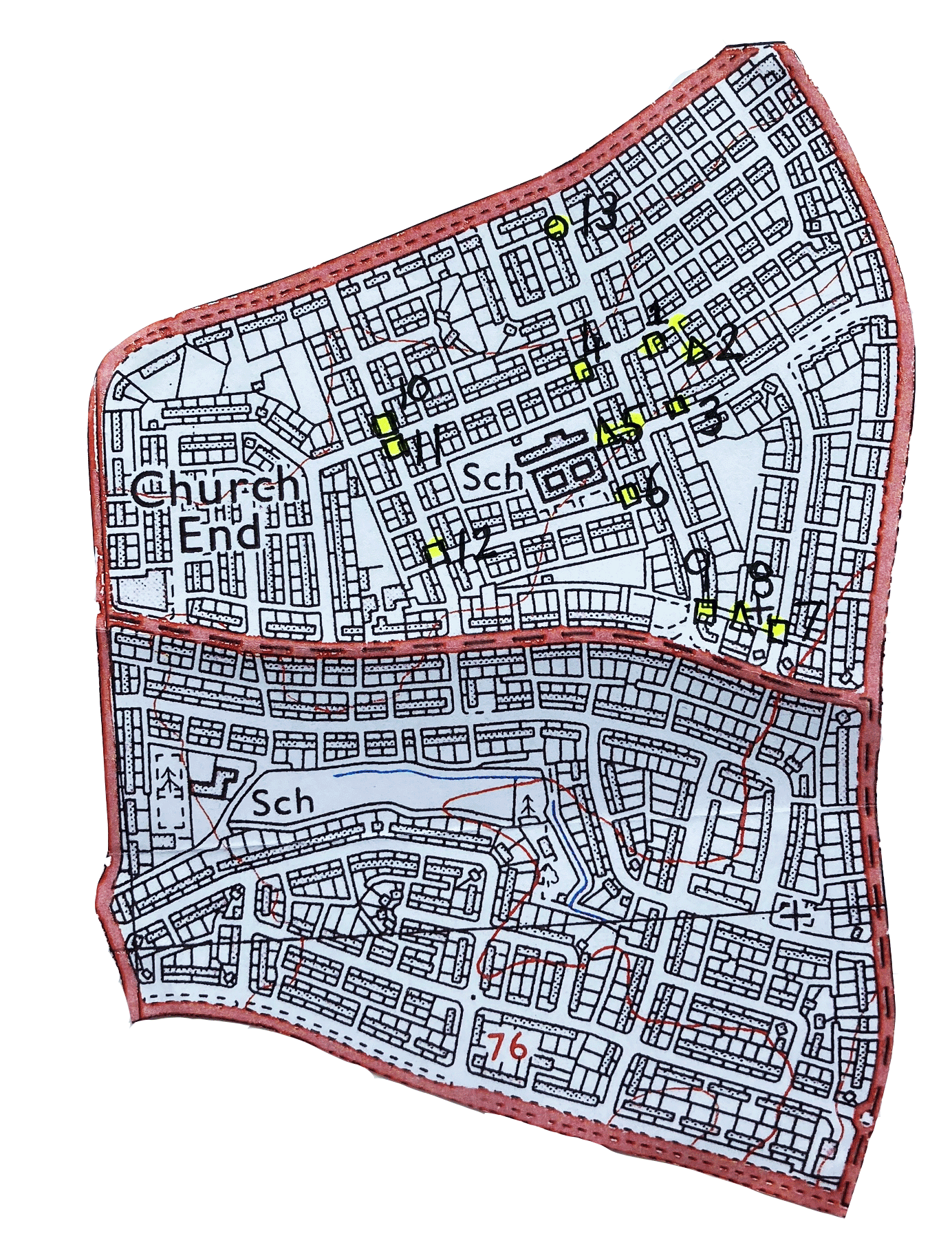



Over the past 45 years I have frequently returned to and walked a Coventry suburb where I lived from the age of 5 to 19, at which point I left to go to Art School and my parents downsized and moved to the other side of the city. How I walked through this neighbourhood pre-1976 is very different from how I am able to walk there now. Most of my journeys as a child would include routes on both roadside pavements and entries. At present, all these entries are securely gated. I was familiar with walking and playing alongside both the front and the backs of houses, in contrast with today where I am forced to only see the façades and therefore only understand half of the neighbourhood. I always thought the back of the houses showed more of the personality, the personality is now locked behind iron gates, observed by security cameras and under constant community surveillance. When I walk the routes there is always a gap inbetween memory and reality, being forced to walk alongside car lined roads while having strong routes inside me that I am no longer able to re-trace.
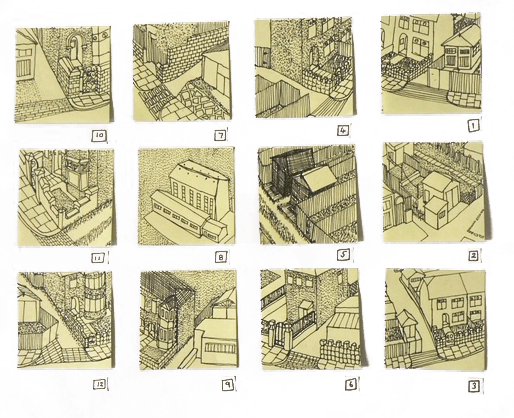 nine reimagined entrances to a network of entries pre the introduction of security gates and three (2. 5. 8.) scenes that are no longer accessible due to to the installation of alley gates
nine reimagined entrances to a network of entries pre the introduction of security gates and three (2. 5. 8.) scenes that are no longer accessible due to to the installation of alley gates
1. Between 64A and 66 Hermitage.
2. Between 76 and 78 Hermitage.
3. Between 67 Morris and 1 Macauley.
4. Between 38 Morris and 64 Hermitage.
5. Between 64 and 66 Morris.
6. Between 92 Morris and The Caretakers House, Ravensdale.
7. Between 211 Longfellow and Methodist Church, Macdonald.
8. The rear of Methodist Church, Macdonald.
9. Between 139 and 141 Morris.
10. Between 37 Mellowdew and 1 Hermitage.
11. Between 39 Mellowdew and 2 Hetmitage.
12. Between 83 Mellowdew and 1 Ravensdale.
“Entry” is the Coventry / Midlands colloquial word for a path or passage between terraced houses. In other regions, an alleyway is also referred to as a ginnel, twitten, jitty, snickelway, wynd, etc. These between spaces have no civic name bestowed upon them, unlike roads that often have inflicted names with little obvious relevance to the locality and its past. These passageways with no formal designation or locally agreed names are simply described as back entry, side entry, our entry, your entry, black pad, black path, back path, etc. The housing estate built on farmland in the 1930s to house workers for the expanding factories has developed a distinctive local identity, despite the fact that residents refer to it by a name that is not the same one as the local authority recognise and is described on the ordnance survey map as Church End which no one locally has ever heard of or uses. So how do I describe an area, an enclave, that is largely either unnamed or inadequately named? Do I have to make it up, embellishing and mixing some reality with a large dose of myth-making and memories, both reliable and unreliable?

Entry triptych
1. Memory drawing.
2. The reverse of the memory drawing.
3. Reimagining the return of a rural landscape based on the marks that came through onto the reverse of the memory drawing.
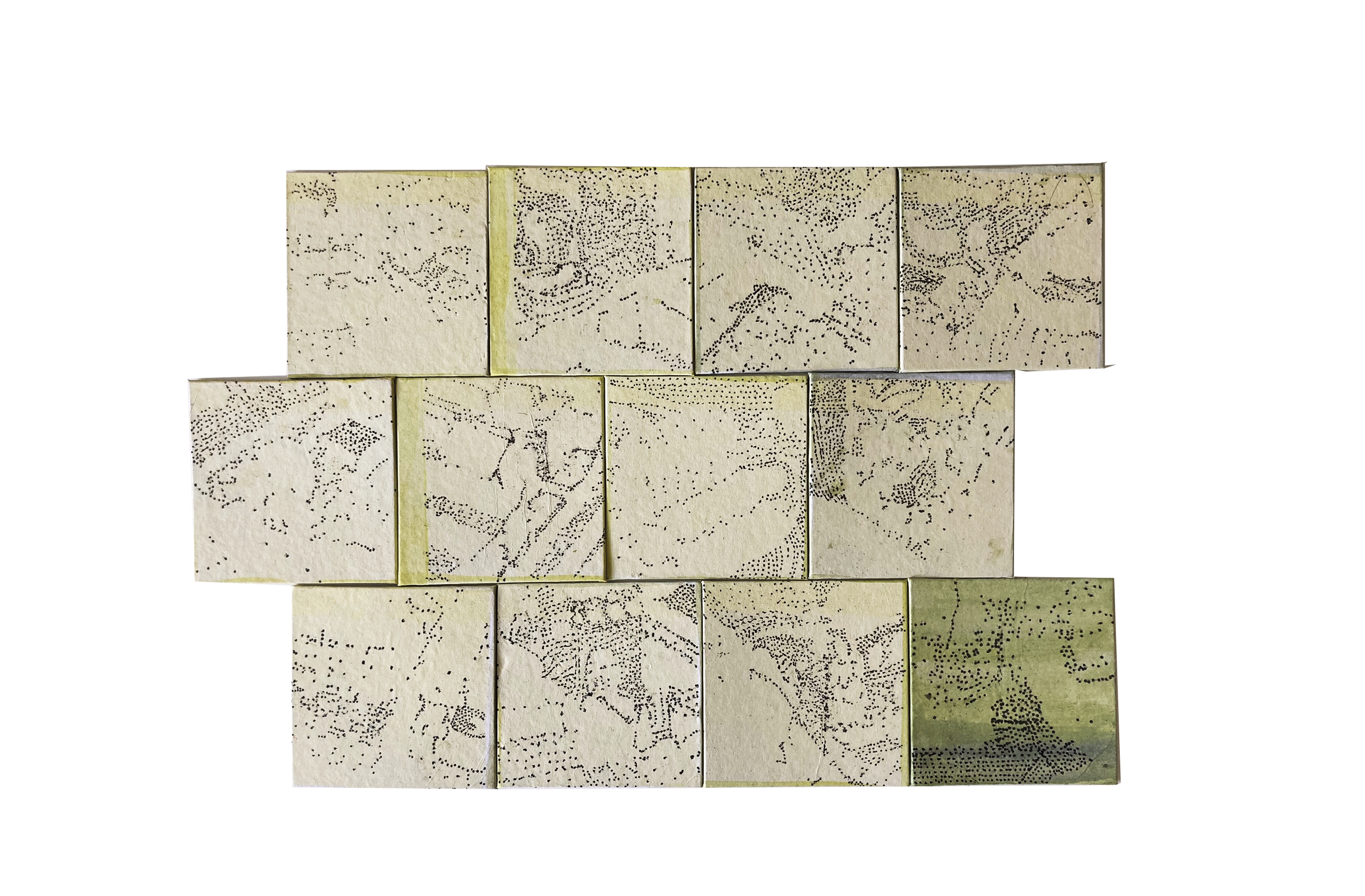
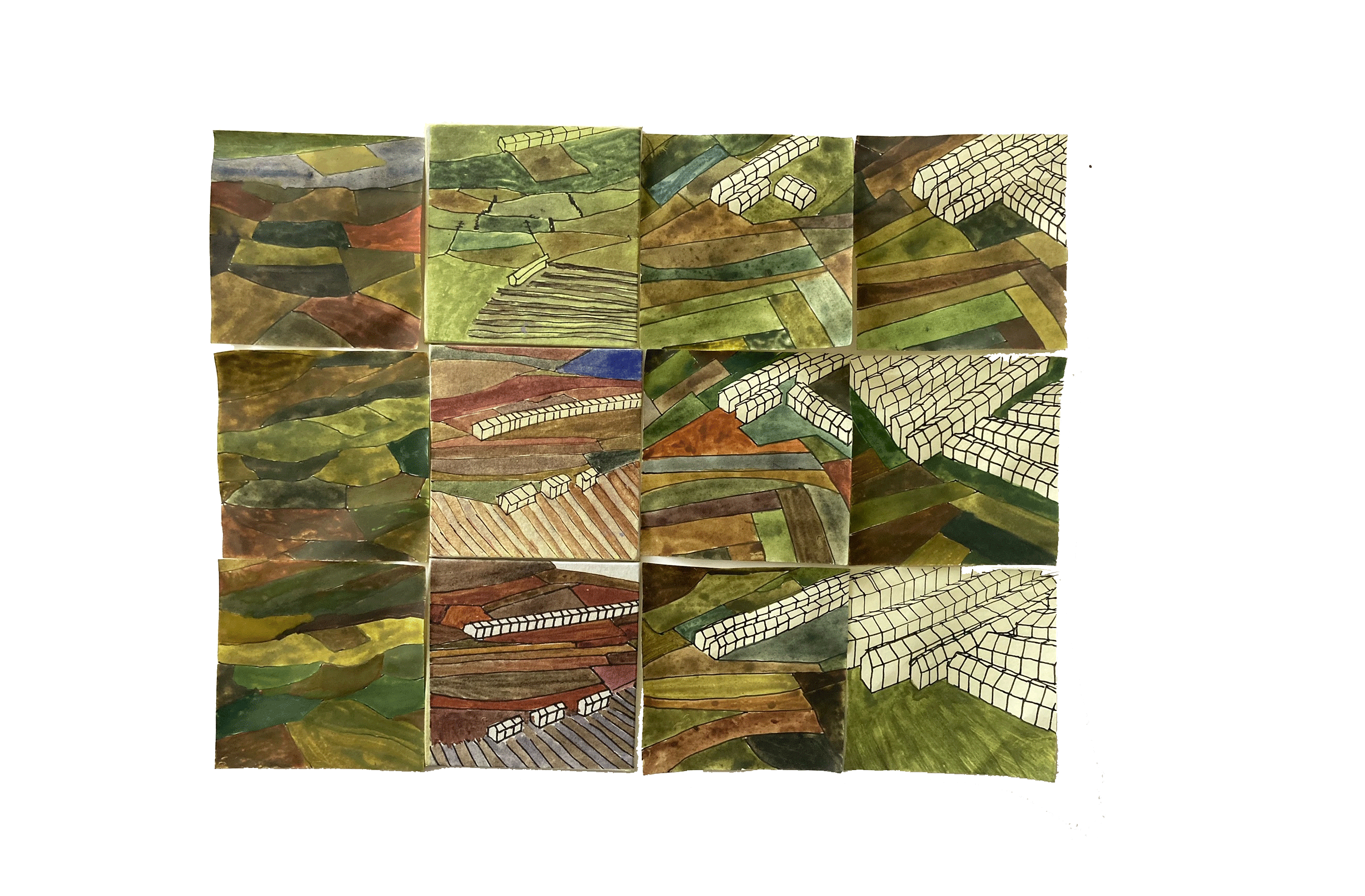
For some reason the enforced Covid lockdown triggered an intuitive creative response, I started to draw and paint childhood memories on commercially made yellow post-it notes. The small, incidental scale seemed appropriate during the time of a very uncertain pandemic. In total I have made seven sets of 12 post-it note paintings about a housing area that comprises 33 accessible residential roads and 196 gated entries that I can (understandably) no longer walk. The first set of 12 post-it note paintings are from memory, creating the estate of the past, with no alley gates, houses with well kept front garden displays not replaced with tight fitting driveways for oversized cars, leaded windows in wooden frames with idealised roses and romantic scenes of Holland and pavements where the concrete slabs are placed in the perfect sequence for games of hop scotch. I instinctively made these drawings using an imagined impossible viewpoint from above, as if from a drone, a dream, a cloud, a satellite or an out of body experience. If I had an out of body experience why would I choose this location to float above, my childhood was in the past, already disappeared, a search for an intangible memory. This ingrained stomping ground / territory is an area on the map that, when cut out, looks like a well used open book or a slightly non-symmetrical winged creature, which I playfully refer to as the Wyken Fly.
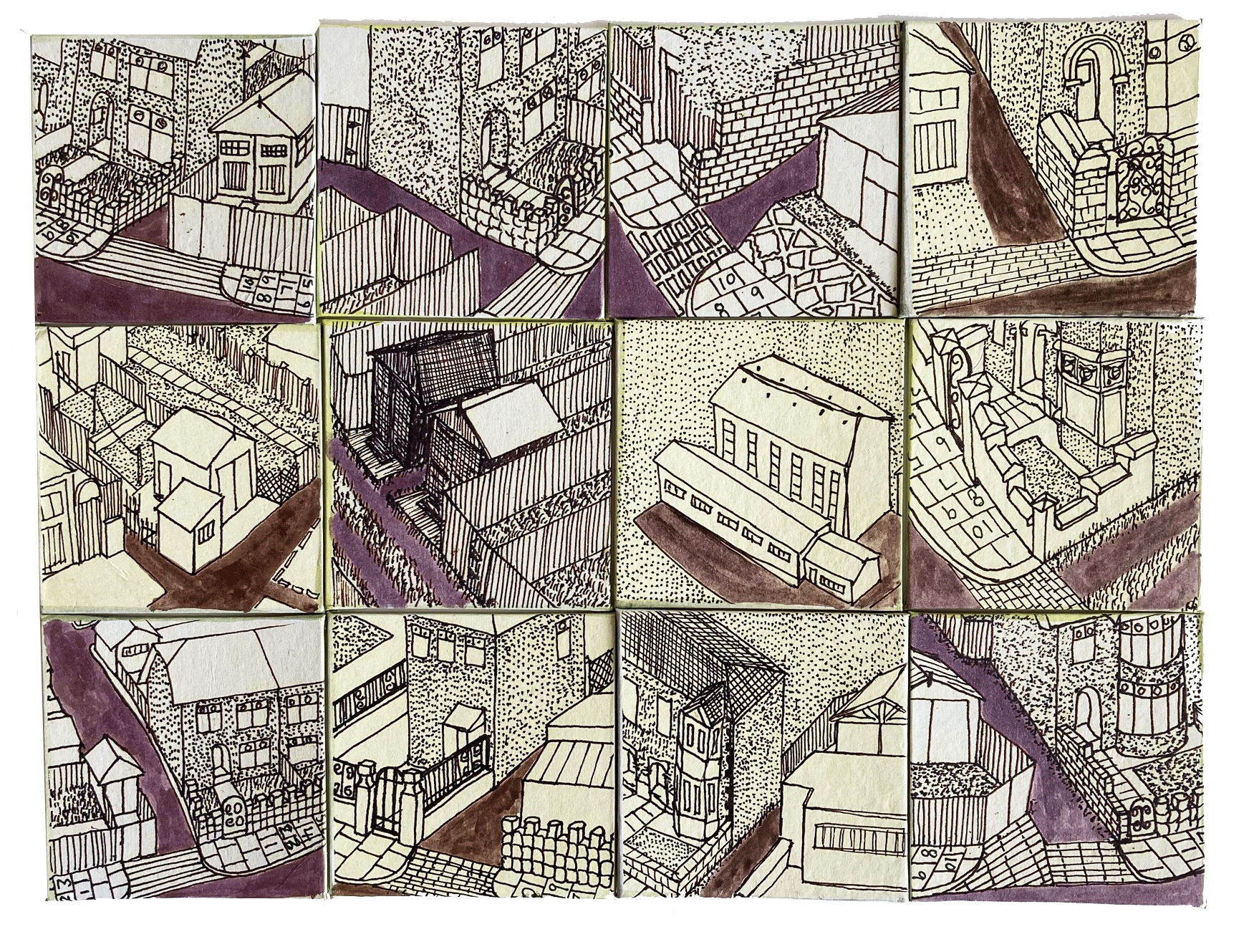

A lot of my previous art work incorporates and transforms found objects, giving an insight into societal changes and pressures. There is a new object to be discovered on city streets. As with many found objects I don’t always know, at first, what they are and I am oddly and often wary of them. While I have been recently walking around the roads and cul-de-sacs of my childhood I noticed a considerable number of brightly coloured cylinders. My experience of housing estates built without a broad infrastructural base and a general lack of resources is they have the potential to nurture addiction and dependence both legal and illegal. The new objects are disposable vapes, vape pens, designer colours gutter sitting alongside the already endemic silver nitrous oxide / cream charger canisters. I have dismantled the vape tubes to retrieve / reuse the outer shell, always accompanied by the smell of candy floss, watermelon bubblegum and blueberry in contrast to the throat burning odours of Senior Service, Capstan (full strength), Park Drive and Passing Clouds associated with the first residents. I have created a palette of found objects and small paintings that I am photographing in the tray-like arena in front of various styles of firmly closed gates, appropriating the locality as an impromptu gallery space where the exhibits are only fleetingly on view and quickly removed. Contrasting palette items with finger tip and handprint brick wall drawings made in frustration and anger with black anti-vandal paint and self-set vegetation waiting for a time to rewild and reclaim the undulating lay of the land that despite the area being entirely blanket covered with lines of houses I have always been able to feel this particular soil firmly under my feet.
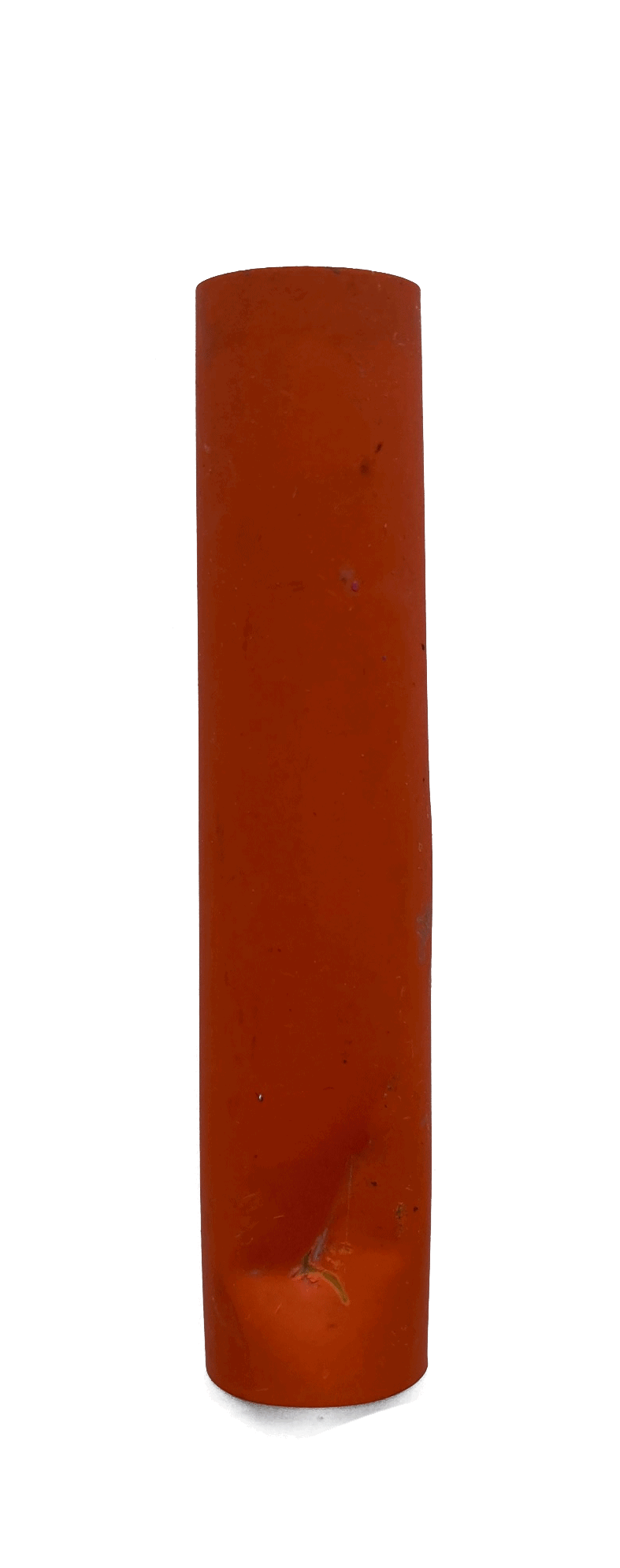


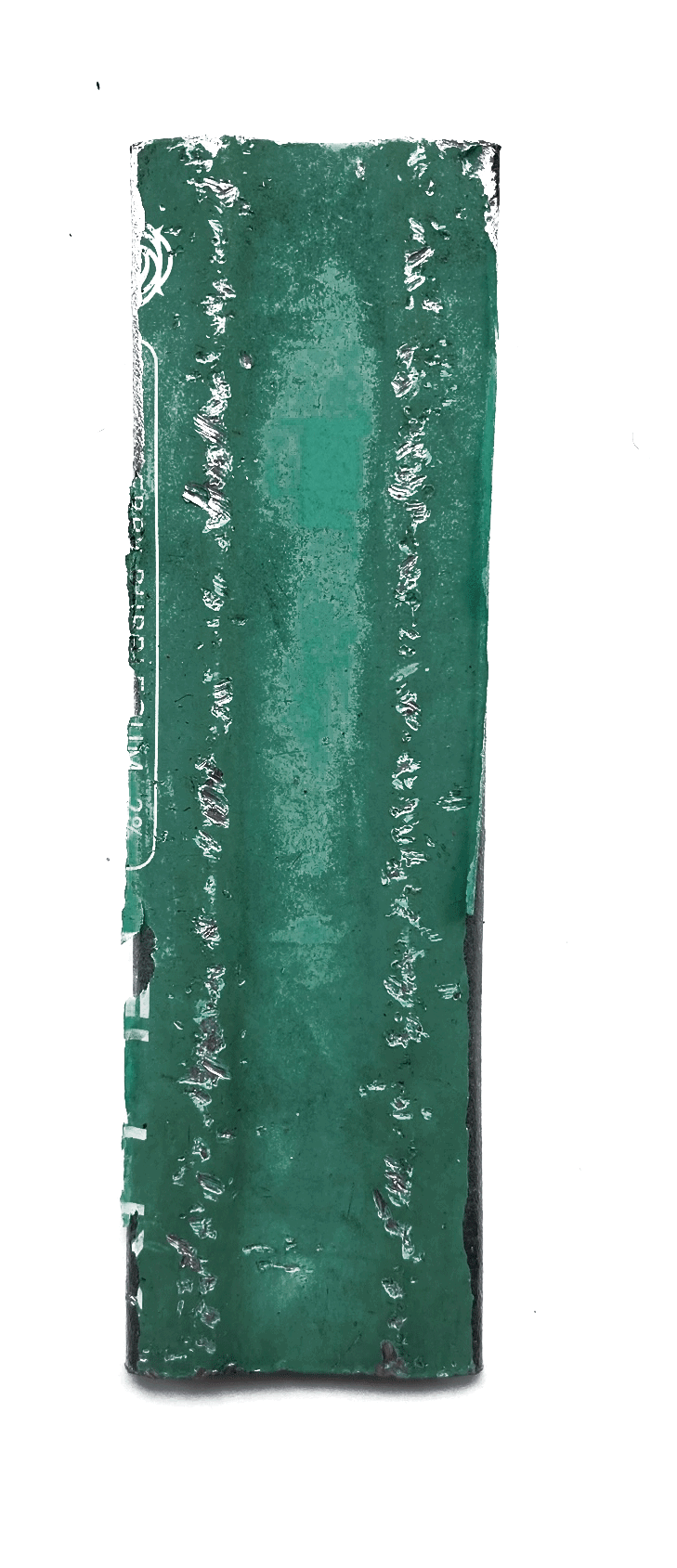
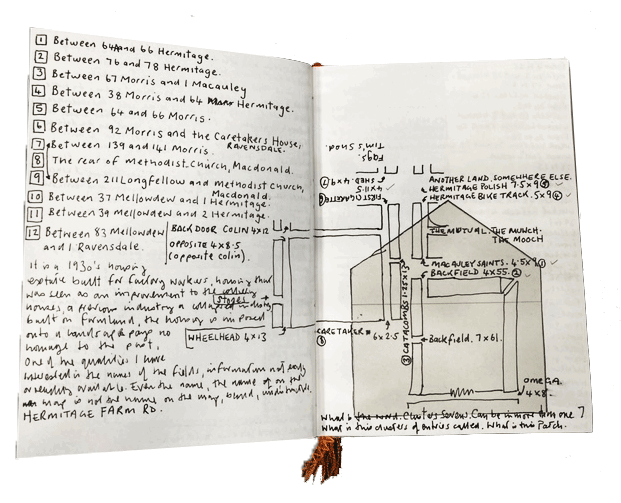
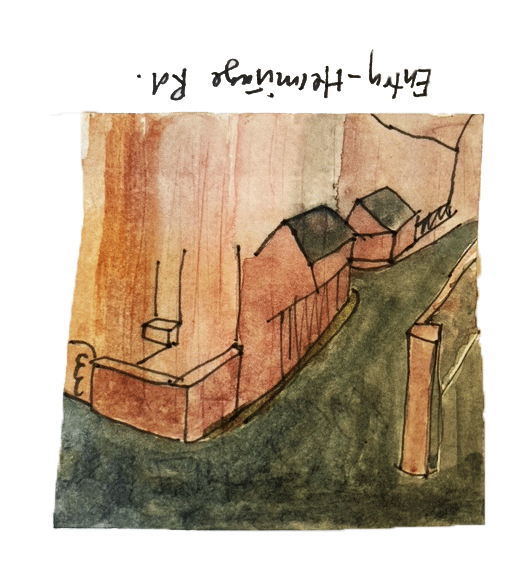
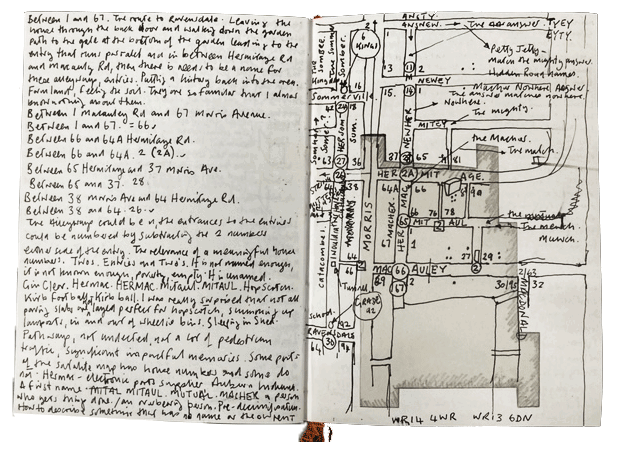
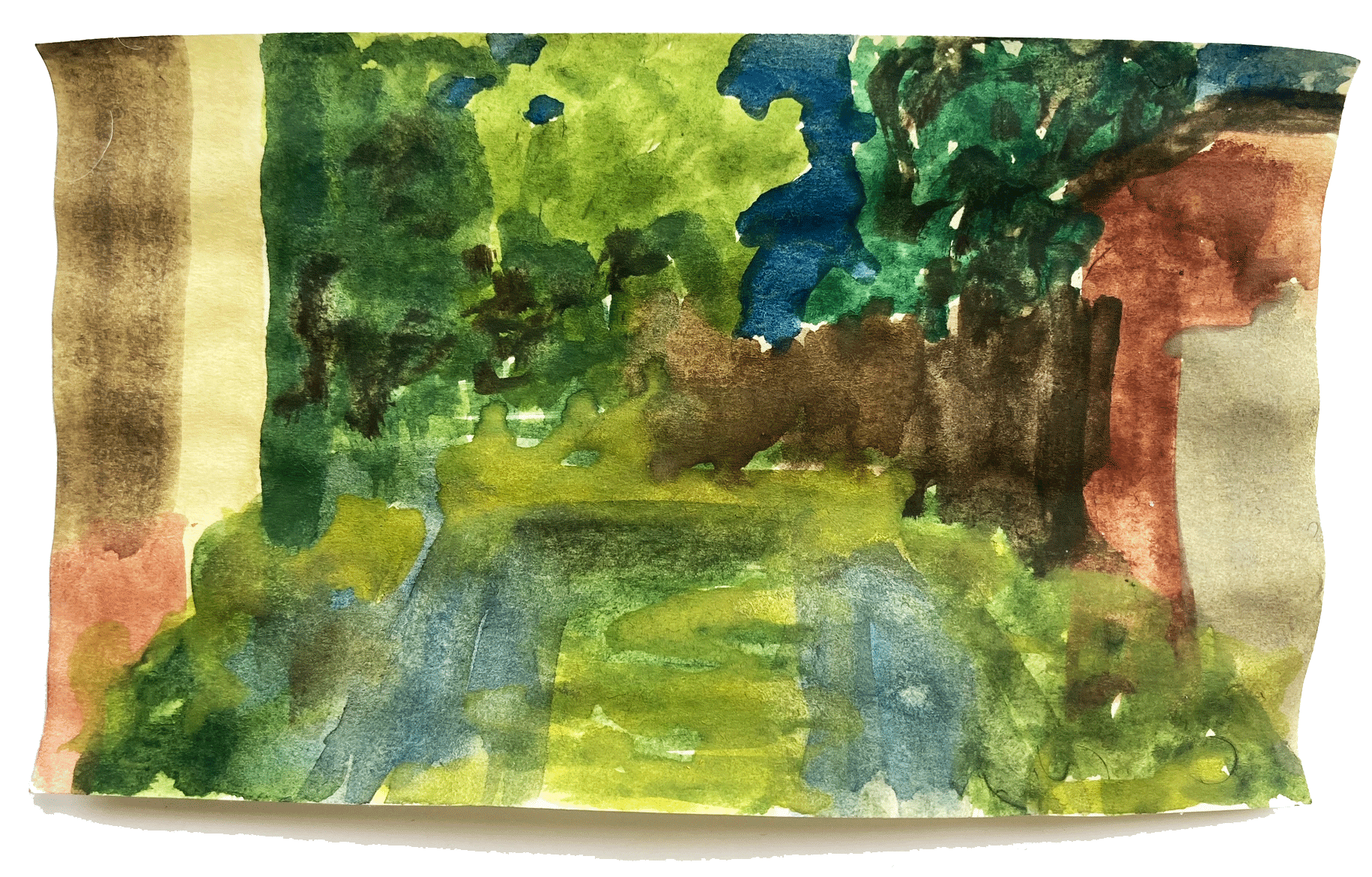
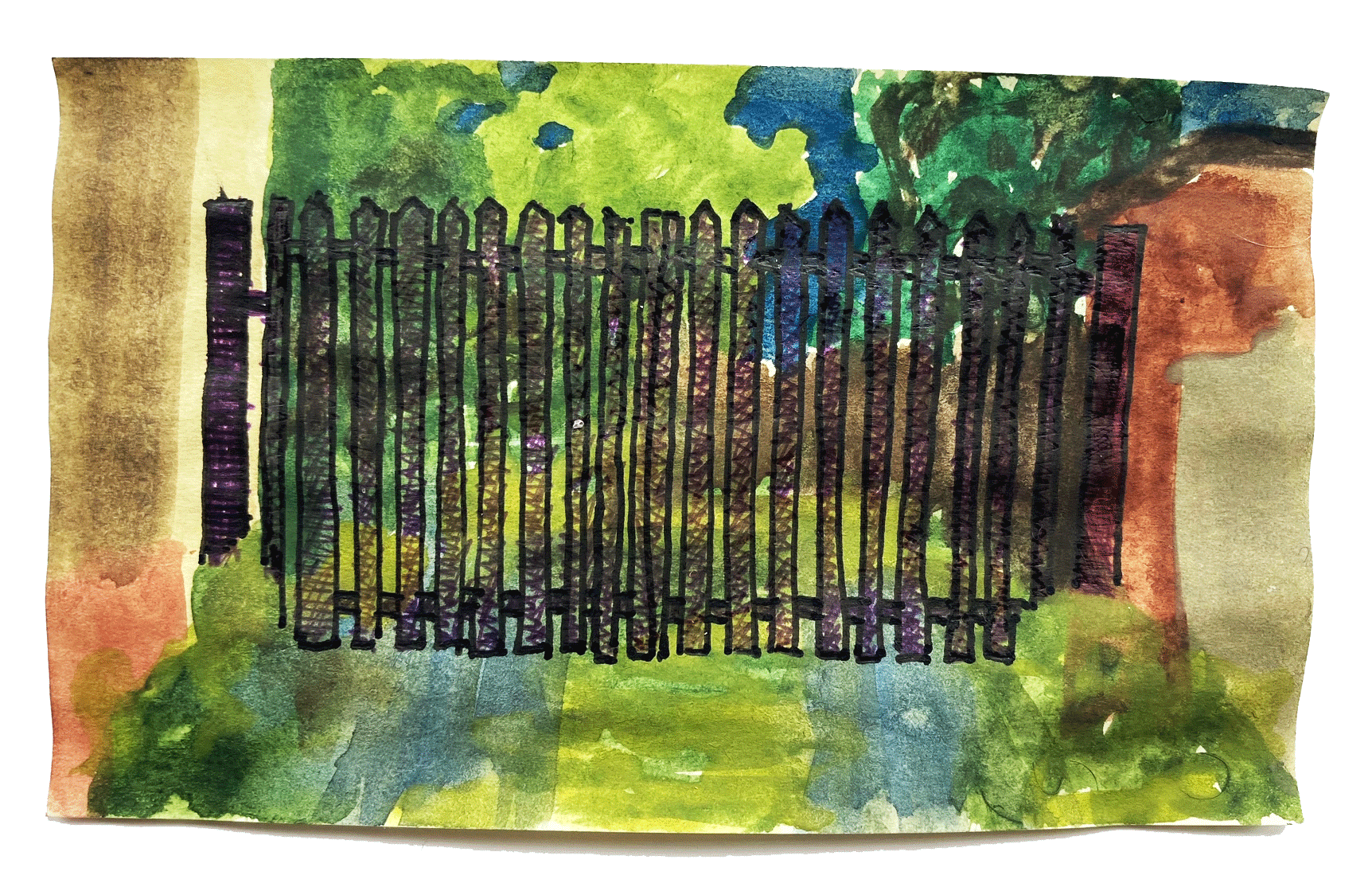
Non-Poem Poem
4 to 2,
between 2 and 18 blocked,
from 17 to 25,
blocked between 17 and 19,
34 to 2,
between 10 and 8 blocked,
blocked between 1 and 24,
from 24 to 32,
between 32 and 73 blocked,
black pad blocked,
73 to 15,
blocked between 15 and 2,
from 2 to 48,
between 48 and 50 blocked,
blocked between 41 and 39,
39 to 1,
between 1 and 11 blocked,
from 11 to 1,
blocked between 1 and 2,
a memorial to KC and AG scrawled on a green utility box,
2 to 54,
between 54 and 56 blocked,
from 41 to 19,
blocked between 19 and 2,
19 to 39,
between 39 and 1 blocked,
blocked between 2 and 41,
from 41 to 51,
between 63 and 1 blocked,
blocked between 2 and 65,
65 to 105,
between 126 and 111 blocked,
from 7 to 1,
blocked between 1 and 128,
between 107 and 95 blocked,
95 to 83,
blocked between 83 and 1,
from 1 to caretakers house,
between caretakers and 92 blocked,
92 to 64,
blocked between 82 and 80,
between 66 and 64 blocked,
blocked between 67 and 1,
from 67 to 43 / 64A,
between 64A and 66 blocked,
66 to 2,
blocked between 42 and 44,
between 2 and 39 blocked,
blocked between 44 (48) and 58.

***
(in)secure Childhood
a film by Duncan Whitley, with Martin Green
